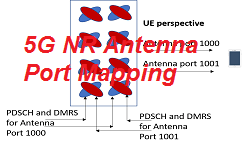5G NR Layer 2 – Radio Link Control (RLC) Overview
5G RLC overall functionality is almost same as LTE RLC. In 5G also, RLC has 3 different modes of operations and each of the mode can transmit and receive data, serving different logical channels as per their requirement. Below list provides the quick view on different modes and their functionality.
- Transparent Mode (TM)
- RLC Header Added : No
- Buffering: Buffering done only at Transmission
- Functionality: No Segmentation and No Reassembly
- Feedback Mechanism (ARQ): No feedback (No ACK/NACK for RLC PDU)
- Radio Bearers or Info usage: SRB0, Paging and Broadcast of System Information (SI)
- Un-Acknowledge Mode (UM)
- RLC Header Added : Yes
- Buffering: Buffering done both at Transmission and Reception
- Functionality: Segmentation done at TX and Reassembly at RX side
- Feedback Mechanism (ARQ): No feedback (No ACK/NACK for RLC PDU)
- Radio Bearers or Info usage: DRBs
- Acknowledge Mode (AM)
- RLC Header Added : Yes
- Buffering: Buffering done both at Transmission and Reception
- Functionality: Segmentation done at TX and Reassembly at RX side
- Feedback Mechanism (ARQ): Feedback mechanism is there (ACK/NACK for RLC PDU)
- Radio Bearers or Info usage: SRB1/SRB2/SRB3 and DRBs
In 5G, both TM and UM mode has separate RLC entity for transmitting and reception side functionalities, whereas AM mode has single RLC entity that performs both transmitting and reception functionality. Each of the logical channel uses specific RLC mode to send and receive RLC data.
In Figure 2 provides a complete description of RLC modes, logical channel(s) that is(are) associated with each of the mode and overall functionality of respective RLC mode.

RLC Entity in TM-Mode (Transparent Mode)
Figure below depicts the functionality of RLC entity in TM-mode. As shown, in this mode, there is no processing of RLC data but buffering is done at transmission side until the scheduling is done, then the PDU is transmitted. As there is no RLC Header, No Segmentation, No Re-assembly and No re-ordering done here, so no difference can be seen in the RLC input data with that of RLC output.

RLC Entity in UM-Mode (Un-Acknowledged Mode)
Figure below depicts the functionality of RLC entity in UM-mode. As shown, compared to TM mode, RLC entity in UM does more functions. There is no feedback mechanism done in this mode.

- Transmission side functionalities include
- Segmentatione. splitting of big chunk of RLC SDU (PDCP PDU) into multiple small chunk as per MAC grant and Modify RLC Header according to the segmentation done.
- Buffering of rest of the segmented RLC PDUs to transmit in next TTI
- Add the RLC header.
- Reception side functionalities include
- Remove the RLC Header
- Buffering of the received segmented data for Re-assembly.
RLC Entity in AM-Mode (Acknowledged Mode)
Figure below depicts the functionality RLC entity in AM-mode. All the functions detailed in UM mode is being done here in AM mode as well. As shown, compared to UM mode, RLC entity in AM does ACK/NACK functionality as well.

With respect to ACK/NACK functionality, this mode has 2 more functionalities i.e.
- RLC Re-trasmission Buffer i.e. at transmission side, after doing the segmentation process, it creates two identical copies of RLC PDUs, then add RLC header and transmit one copy of data to lower layers, store the other copy in Re-transmission Buffer. During the control proces, if RLC gets NACK or if it does not get any response for a particular RLC PDU, from peer RLC Entity for a certain period of time, then stored RLC packet in Re-transmission buffer gets transmitted again.
- RLC PDU Control Procedure This is to provide feedback mechanism on received RLC PDUs.
Article Submitted By:

Mangala Jaji has about 15 years of experience in 4G, 5G System development and currently working as Architect System-Software Sasken Technologies Ltd, India. She has completed her engineering in computer Science, from Karnatak University, India.

Prerit Jain has about 15 years of experience in 4G, 5G System development and currently working as Sr. Member of Technical Staff, Altiostar Networks Inc. He completed his Bachelors of Technology from NSIT, Delhi. from India.



